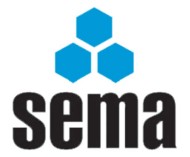The importance of correct pallet positioning and what overhang should be allowed forms the basis of our first question this month. Then we look at the use of a stabiliser when fixing racking to a wall.
 Poorly Positioned Pallets
Poorly Positioned Pallets
Q. Recently I visited a warehouse where (amongst other issues) the pallets appeared to be poorly positioned in the racking with the pallet blocks overhanging the racking beams. From memory I believe that the pallet blocks should be placed on the beams (to prevent undue stress on the pallet base members), however I cannot find this written in the HSE documents, PM15 or HSG76. Please can you confirm if this is the case?
A. Your memory is correct and corner blocks on pallets should be supported directly on the beams. I think this seems to have been something that has been omitted in extracting the most important issues from the SEMA codes for insertion into HSG 76.
I am not sure if you have access to British Standards however some guidance on this is given in BS EN 15635:2008 Static Steel Storage Systems – application and maintenance of storage equipment, which indicates a general 50mm overhang of the pallet from the face of the beam.
More detailed information is given in BS EN 15620:2008 Static Steel storage systems – tolerances deformations and clearances, which applies a +/- 10mm tolerance to this 50mm placement which should be equal to front and back of the rack.
From your photograph it would appear that while this requirement is not being met probably because the racking has been specified for a different depth of pallet the corner block is just being supported on the beams by about 20mm or so. In my opinion not ideal, however not dangerous as long as the user maintains what seems to be presently happening and locates the pallet exactly equally on the front and back beams.
I agree that there is a strong possibility that someone will try to position pallets such that they are achieving the recommended 50mm overhang at the front which they can see during the positioning operation and will then end up with the rear of the pallet being supported on the bottom board only, which is not acceptable and is dangerous. There is also the possibility of a non-Chep pallet appearing in the warehouse with smaller corner blocks which will make the present situation worse.
The question is whether the User has a good enough management system in this warehouse to ensure that all this never happens or alternatively they strip down the racking, obtain new frame bracing members which will allow the rack to be re-built to the correct depth using the existing uprights and beams. This will suit the Chep pallets currently in use and eliminate the possibility of miss-positioning the pallets altogether.
Fixing racking to a wall
Q. I recently attended a SEMA Racking Safety Awareness course. There is one question I would like to ask – can you bolt a metal stabilizer arm from the racking to a wall?
A. Fixing the racking to a wall is generally not recommended unless the connection is designed and approved by both the building designers and the racking supplier. Building designers are often reluctant to give permission for additional forces to be imposed on their structure in any event. Buildings also move under loading which can cause problems for the racking; alternatively the racking may impart forces to the building structure for which it has not been designed.
Racking manufacturers generally prefer the racking to be supported on the ground floor slab only. If there is a problem with the floor support then this will not be solved by connecting the racking to the building. If there is a problem with the use of the racking then it is suggested that this be discussed with the supplier or with an independent consultant.
SEMA Annual Safety Conference 2013 – a date for your diary
The 2013 SEMA Safety Conference has been scheduled for Thursday, 7 November; at the National Motorcycle Museum, Solihull. For full details email enquiry@sema.org.uk
SEMA Technical Enquiries
If you have a query send it to us by fax or email and we will do our best to have it answered by one of our technical experts.
SEMA Rack Safety Awareness and Inspection Courses
These courses are aimed at end users, giving an in-depth look at the need for inspections, how to conduct an assessment and what actions to take when this is completed.
SEMA Approved Rack Inspectors Qualification
Aimed at professionals who conduct rack surveys as an integral and significant part of their duties. It involves delegates in undertaking an in-depth SEMA Course, together with an examination and practical assessment.
SEMA Publications
SEMA has 26 publications in stock – Codes of Practice, ‘Guides’ and European documents.
SEMA USERS Club
SEMA runs a USERS Club designed to be of benefit to purchasers and users of storage equipment.




Comments are closed.